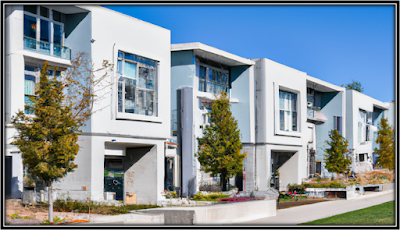The financial analysis of a new housing development involves assessing the costs and potential returns associated with the project. It includes evaluating factors such as land acquisition, construction costs, financing options, projected sales, and operating expenses. By conducting a comprehensive financial analysis, developers can make informed decisions about the feasibility and profitability of the housing development before proceeding with the project. You get a detailed and ready-to-work template out of the box with this file.
After purchase, the financial model template will be directly available to download. It comes with a blank version and a filled in version. It is also included in this real estate template bundle as well as the construction spreadsheets bundle.
Build to Sell Screen Shots
Template Features:
- Update: Added a dynamic schedule for when sales proceeds are collected relative to the sale date.
- Update: Made it easier to input equity contributions and show distributions of the project.
- On the build to sell version, I've added an IRR sensitivity table.
- On the build to sell version, I've added an option to have interest reserve be required or not (yes/no selector). If it is, then the user can select the amount of months the interest reserve must account for (paid up front). If no interest reserve is required, then interest will just hit cash flow each month as it is incurred. This is all of course if debt is utilized.
- Use for up to a ten-year period (monthly and annual views).
- Great for build and sell developers.
- Up to ten unit types can be configured (with arbitrarily large quantities of units)
- For each unit type, define count of units started per month and count of units sold per month (two rows for each)
- Includes two joint venture options if you are raising money from investors.
- IRR Hurdle Cash Flow Waterfall
- Preferred Return Cash Flow Waterfall
- Robust set of configurable GP fees.
- Easily define high level assumptions on the Global tab and see how it effects final return on investment metrics.
- Output summary includes IRR, NPV, ROI, Equity Multiple, and more for GP, LP, and the overall project.
- Granular cost schedule to define the various costs for each unit type in detail.
- Separate cost schedule for ongoing costs not directly related to building the units (land acquisition, architecture fees, property taxes, and more). There are plenty of slots to account for any size deal.
- Hotel Deal Analysis - Advanced
- Fix and Flip Scaling Model
- Multi-Family Acquisitions (detailed)
- Sale-leaseback Analysis
- Retail Building Construction
- Lot Development
- Strip Mall Acquisition Model
- Apartment Building
- Single Tenant Industrial
- Mobile Home Parks
- Mixed-Use Real Estate
- Self Storage: Up to 6 Deals
- Rental Property Scaling
- STRs (Short-term Rentals)
- Unit-Based Real Estate Acquisition
- Assisted Living Facility / Nursing Home
- Short-term Rental Arbitrage
- Hotel Development / Acquisition
- IRR Sensitivity Analysis (occupancy)
- Multi-family Real Estate Acquisition (annual only)
- Real Estate Flipping Calculator
- Property Management Business
- Real Estate Brokerage
- Real Estate Development
- Real Estate Checklist
- Rental Property ROI Calculator
- Seller Financing
- General Cash Flow Waterfall: 3 IRR Hurdles
- General Cash Flow Waterfall: 3 IRR Hurdles and GP Catch-up Provision
- Preferred Equity
- Preferred Return
- Zero Down Seller Financing
- Cost Segregation Study
